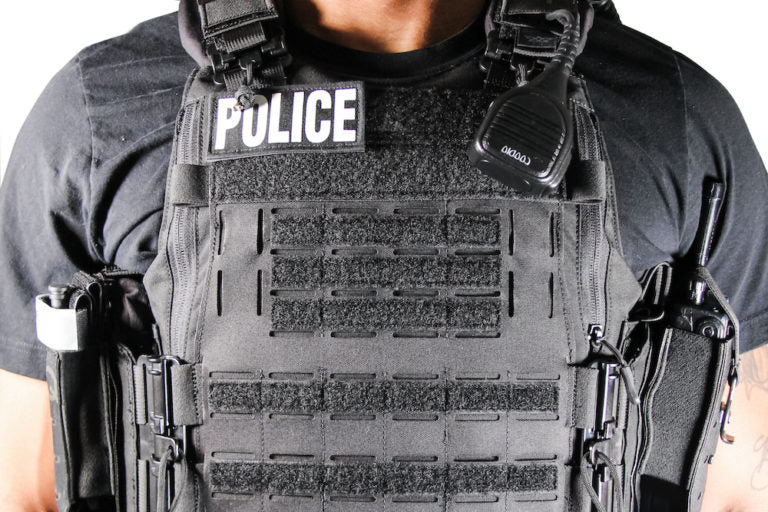
How to Choose the Right Body Armor: A Guide for Law Enforcement and Prepared Civilians
How to Choose the Right Body Armor: A Guide for Law Enforcement and Prepared Civilians
Choosing the right body armor is one of the most important decisions you can make when it comes to personal protection. Whether you're in law enforcement, private security, or a civilian committed to preparedness, understanding the types of body armor available—and what best suits your needs—can make all the difference in critical situations.
What Is Body Armor?
Body armor refers to protective clothing designed to absorb or deflect physical attacks, particularly from firearms or sharp weapons. Modern body armor includes soft armor vests, hard armor plates, and modular plate carriers. The right choice depends on the threats you expect to face and the environment in which you operate.
Types of Body Armor
Soft body armor is typically made from layered aramid fibers and is designed to stop handgun rounds. It’s lightweight, flexible, and ideal for concealed wear or daily use. Officers, security professionals, and armed civilians often rely on soft armor when rifle threats are unlikely.
Hard armor is engineered to stop high-velocity rifle rounds such as 5.56x45mm NATO and 7.62x39mm. These plates are inserted into plate carriers and offer significantly higher protection than soft armor. Common materials include steel, ceramic, and polyethylene—each with different trade-offs in weight, durability, and cost.
NIJ Ratings and 5.56 Threats
The National Institute of Justice (NIJ) classifies armor into protection levels. Level II and Level IIIA soft armor are designed to stop pistol rounds like 9mm, .357 Magnum, .44 Magnum, and .357 SIG. These options are ideal for low-profile or everyday carry but are not suitable for rifle threats.
Level III plates are rated to stop standard rifle rounds such as 7.62x39mm and 5.56x45mm NATO, including most FMJ loads. However, certain high-velocity or armor-piercing variants like the M855 “green tip” may require enhanced Level III+ or Level IV plates, depending on the material and construction.
Level IV armor provides the highest level of ballistic protection available under NIJ standards. It is capable of stopping powerful armor-piercing rifle rounds, including .30-06 M2 AP. These plates are typically made from ceramic or advanced composite materials.
Choosing the correct NIJ level means understanding your likely threat profile. If you're in a role where handguns are the primary concern, soft armor may be sufficient. But if rifle threats are a possibility—even if rare—hard plates are strongly recommended.
Carrier vs Concealed Options
Your mission should dictate how you wear your armor. Concealable vests are slim and designed for discreet use under clothing. They’re popular with undercover officers, plainclothes professionals, or civilians wanting low visibility.
Plate carriers, on the other hand, offer modularity and adaptability. With support for MOLLE attachments, quick-release systems, and side plate integration, they are the preferred platform for tactical and duty use. Many users opt for carriers that can hold both hard plates and soft armor backers for layered protection.
Fit and adjustment matter just as much as protection level. Armor should cover your vital organs—particularly the heart and lungs—and sit snugly without restricting movement. Ill-fitting armor compromises both comfort and safety.
Material Considerations
The material of your armor affects not just protection, but also weight and mobility. Steel plates are durable and affordable but tend to be heavy and may produce dangerous spall (bullet fragmentation). Ceramic plates offer a good balance of weight and stopping power but can be fragile and require careful handling. Polyethylene (UHMWPE) plates are the lightest option, highly resistant to corrosion, and buoyant—but they come at a higher price point and may struggle with some penetrator rounds unless rated accordingly.
Accessories and Add-Ons
Trauma pads are a valuable addition to any hard plate setup. While not ballistic-rated, they reduce blunt force trauma and improve comfort. Side plates, shoulder protection, and throat or groin add-ons can offer extended coverage for those operating in high-risk environments. Many plate carriers also support radios, hydration packs, or IFAKs, depending on mission needs.
Legal Considerations
Body armor is legal for civilian ownership in most U.S. states, but some jurisdictions impose restrictions based on criminal history or intended use. Always verify local and state regulations before purchasing armor.
Final Thoughts on Choosing Body Armor
The best body armor balances protection, mobility, and mission compatibility. It should be rated for the threats you're most likely to encounter, fit correctly, and integrate with the rest of your gear. Whether you're preparing for duty or personal defense, informed decisions lead to real-world readiness.
At JCP Tactical, we offer a curated selection of NIJ-rated armor plates, plate carriers, and accessories to meet the needs of law enforcement, security personnel, and civilians who take their protection seriously. If you have questions about selecting the right armor for your application, our team is here to help you make the right choice.
